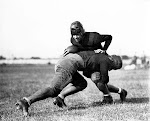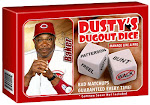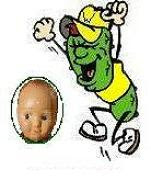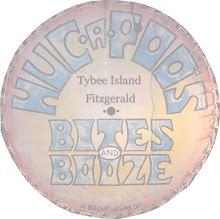
It's time to hold Dusty Baker's feet to the fire. The players have to hit, but Dusty also has to show a better understanding of how to wrangle offense out of a challenging collection of players. Adam Dunn's two strengths have always been power and on base percentage. You're completing wasting his on base percentage when you continue to bat him low in the order.
Meanwhile, Ken Griffey Jr. needs a long triple to score from second base, and he's currently sporting the worst range of any outfielder I've ever seen. If this team's goal is to win, they cannot continue to play defense with one and a half outfielders. I've long been a staunch supporter of Griffey as he's dealt with unfair criticism since his 2000 homecoming, but his aging body's limitations have reached the point where he's killing this team on a daily basis more than any outside observer could possibly believe. Playing baseball at the highest level in the world is challenging enough, but it's well-nigh impossible to hit, run, and field with a fork sticking out of your back.
The Cincinnati Enquirer's best baseball man, John Erardi, is on top of things in Redsland:
Hey, who's counting?
Success really doesn't hinge on 'the little things'
We keep hearing that the Reds "don't do the little things well," but did you know the average for National League teams last year was 47 sacrifice flies (or about two every seven games) and 65 sacrifice bunts (two every five games), and that the Reds were only one below the sac-fly average and plus-8 on the sac-bunt average?
There's a reason they're called "the little things." They don't affect the outcome of a team's regular season as much as the big things (getting on base, which directly affects total runs scored).
TALE OF TWO SEASONS
How about these numbers on Aaron Harang (right) through his first eight starts:
2007 - 5-1, 5.04 ERA (55 runs of support from team)
2008 - 1-5, 3.09 ERA (22 runs of support from team)
Is there anybody out there who still wants to insist that the best gauge for evaluating starting pitchers is their won-loss records?
JAY, NOT LENNY
The biggest reason 21-year-old Jay Bruce (below left) is still in Louisville is that the Reds brass - including the development people - want him to get his on-base average closer to 65-70 points above his batting average to show he has the discipline to hit in the majors. Right now, Bruce's on-base average (.343) is only 23 points higher than his batting average (.320). This isn't to say Bruce has to get his OBA into that plus-65-70 range to get called up, but he has to be moving in the right direction.
He's drawn only seven walks compared to 30 strikeouts. Roughly 5 percent of his plate appearances go for walks.
The NL average walk rate for a non-pitcher this season is 9.7 percent. If Bruce can't match that rate in Triple-A, he's going to have a hard time against quality major-league pitchers.
By the way, Brandon Phillips ' career OBA is only 44 points above his career BA. That's tolerable if you're blasting a lot of long balls, but if you're not ...
THE BATTING ORDER
Pundits (including us, in this space last week) tend to over-analyze the rationale in explaining why a specific batting order should be utilized. All you need to know is this: Bat your high on-base guys 1 through 3. We strongly recommend Jeff Keppinger, Adam Dunn and Edwin Encarnacion, respectively.
Runs come from hitters getting on base and the hitters behind them (Joey Votto, Phillips, Ken Griffey Jr. ) getting them home.
Batting Encarnacion anywhere but 1-4 is a waste of his .360 OBA, which is 102 points higher than his batting average (.258). We think his BA (and, thus, his OBA) will climb with the season.
GET 'EM ON, GET 'EM IN
Over their careers, almost everybody hits within 10 points of their batting average (either way) with runners in scoring position. With runners in scoring position, Tony Perez - regarded as one of the great clutch hitters in history - hit only five points higher than his overall batting average with RISP (.284, .279).
Did you know the 1976 Reds hold the major-league record for most runners left on base in a season - and yet they scored the second-most runs in franchise history?
Why? They also had a franchise-record .357 on-base average.
HIT DUNN NO. 2
It is simply untrue that Adam Dunn (below right) is not a good 2-hole hitter.
Though conventional wisdom says a 2-hole hitter must make contact and spray the ball around, the facts don't support it. It's more important to get on base because that's what best leads to scoring runs. Hitting behind the runner might look good and fit "the book" approach, but sac-bunting and swinging away are a break-even proposition.
Look at it this way: Whether to sac-bunt or swing away is a matter of managing risk. If you sac-bunt, you're less likely to get on base, but the outs you generate are not as bad because you advance the runner. If you swing away, you're more likely to get on base and advance the runner additional bases, but you're also more likely to generate a "bad" out that doesn't advance the runner or, even worse, results in a double play.
On balance, sac-bunting and swinging away average out, just as Dunn's approach to hitting averages out.
He makes considerably less contact than the average 2-hole hitter (he's high-risk), but he's high-reward because of all the bombs he hits - and he has an excellent on-base average, which means that even though he's whiffing a lot, he more than offsets it with his high on-base average from walking a lot.
At No. 2, a .380 OBA guy who strikes out and is slow is better than a fast .315 OBA guy. Especially if Mr. .380 OBA hits 40 bombs.
Batting Dunn No. 2 gets him to the plate 50 more times in a season than batting him No. 5.
And why is such a big deal made about the 2-hole hitter advancing the runner, anyway? Last year, the Reds' No. 2 hitter came to bat more than half the time (56 percent) with nobody on base.
Did you know that over the last two seasons Dunn has been right in line with the league average in terms of advancing runners from first base? (League average: 40 percent; Dunn, 39.7 percent)
The only Red with a comparable number of opportunities who advanced runners at a significantly higher rate was Encarnacion (45 percent), while Phillips - who might look more like a traditional 2-hole hitter to some - actually has advanced runners at a lower rate (38 percent) than Dunn.
And did you know that in only 35 more at-bats than Dunn with a runner on first, Phillips has hit into 24 more double plays?
Joel Luckhaupt, Justin Inaz and Greg Gajus contributed.












.jpg)






1 comment:
Your blog keeps getting better and better! Your older articles are not as good as newer ones you have a lot more creativity and originality now keep it up!
Post a Comment